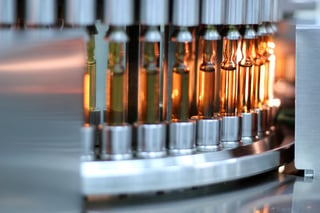 For many pharmaceutical companies, drug discovery and development involves a complex interaction between the development process, manufacturing process and quality assurance.
For many pharmaceutical companies, drug discovery and development involves a complex interaction between the development process, manufacturing process and quality assurance.
Pharmaceutical manufacturing activities and related expenditures can qualify for the research and development (R&D) tax credit, but it’s vitally important to understand which of those activities are specifically eligible research activities.
As pharmaceutical companies ramp up investment in manufacturing processes and technologies, these companies are understanding the need to optimize innovation for pharmaceutical manufacturing and develop continuous manufacturing processes.
These companies’ key areas of focus are designing and developing state-of-the art equipment, processes and product packaging. In recent years, pharmaceutical companies have focused on the marriage of biological products, drug containers and drug delivery devices. It’s not so much the standalone technologies that drug makers are reaching for, but rather targeted innovation that enhances the overall effectiveness of the manufacturing process and methodology.
To this end, the following pharmaceutical manufacturing areas need to be evaluated and analyzed for the R&D tax credit eligibility:
1. Good Manufacturing Processes (GMP)
The U.S. Food and Drug Administration (FDA) tightly regulates the pharmaceutical industry, and certain processes and procedures must be followed for companies to be in compliance.
The FDA instituted the GMP to ensure manufacturers of drugs are producing safe, pure and effective products. GMP services can include:
- Pre-formulation and formulation development
- Analytical methods development and validation
- Release and stability testing
- Formulation analysis
- Clinical trial material labeling and packaging
2. Scale-Up
For pharmaceutical companies, the scale-up from bench scale to commercial scale is a significant research and development activity requiring a lot of scientific labor and material costs to properly achieve the desired batch size.
Once bench scale (typically conducted on a small sample basis) is achieved, companies often seek to develop a larger production scale manufacturing process involving the design and use of new manufacturing equipment, analytical test methods, and new drug ingredients (API) and raw materials.
These scale-up costs are expensive and, since they involve pre-production activities, should be qualified as research expenses.
3. Stability Testing
Stability testing is a critical component of the pharmaceutical manufacturing process and is required to ensure that a product is stable within the different climate zones of the world.
During the development and manufacturing of a new drug, frequent stability studies are conducted, including storing the drug in packaging under a range of temperatures and humidity conditions for long periods of time to determine the best drug compositions for the end product.
These testing activities frequently involve qualified personnel conducting the studies, both in-house employees and the use of outside contractors.
4. Packaging
The importance placed on packaging systems in the pharmaceutical industry has expanded considerably as a result of stricter requirements. Packaging plays a vital role in ensuring the safety and traceability of products across the supply chain.
The costs and time associated with meeting these regulations can be high. Many manufacturers will require new labeling, coding, packaging and scanning equipment to become compliant. For some pharmaceutical manufacturers, design and installation of new equipment may be required as an expansion of their existing packaging lines. For those with space limitations, this means potentially turning to innovation and automation, where enhanced flexibility and technology offers the capability to handle multiple products in the same space.
While working to upgrade their packaging lines to gain compliance with strict requirements, many pharmaceutical manufacturers are turning to new technology and advancements in drug packaging.
5. Manufacturing Personnel
I.R.C. § 41(b) (2) defines the term “in-house research expenses” as any wages paid or incurred to an employee for qualified services (either direct research, supervision or support activities). Manufacturing personnel perform many research activities that may qualify for the R&D tax credit.
For example, manufacturing personnel’s job responsibilities frequently include:
- New equipment setup/breakdown and cleaning
- Hands-on manufacturing operations
- Materials dispensing
- Preparing test documentation
- Preparing laboratory batches
Job responsibilities also include performing scale-up experiments to facilitate technology transfer for the manufacturing area, procuring and maintaining inventory of APIs and excipients needed for manufacturing, and interacting with analytical colleagues to ensure testing of materials as needed.
While they may not be the core scientists and researchers at a pharmaceutical company, these manufacturing personnel nevertheless perform an important research and development function for the company.
Ready to learn more about capturing R&D tax credits for your qualifying pharmaceutical manufacturing expenses?


